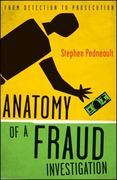Need help
A farmer is planning to plant one of two crops in his field (1 acre) in the next year. The cost of originally planting the first crop is $21,000 per acre and the annual replanting cost is $2,000 per year per acre. The revenue depends on the chance outcome of three possibilities: 35% chance of getting $9,400 (Optimal) . 50% chance of getting $5,900 (Expected) 15% chance of $500 (Pessimist) On the other hand, the cost of originally planting the second crop is $19,200 per acre and the annual replanting cost is $1,800 per year per acre. The revenue per acre depends on the chance outcome of another three possibilities: 35% chance of getting $7,900 (Optimal) 50% chance of getting $5,200 (Expected) 15% chance of getting $1,900 (Pessimist) a) Draw the decision tree for one period revenue in various states of the world. b) What are the expected revenues, profits, and standard deviations of the two crops? c) With an RRR that is 8.5%, what is the NPV and IRR over 10 years? (cash flows are expected profit that was computed) d) What is the return to risk ratio of each crop? e) Which crop is the more optimal choice? Let us say the farmer is given a land subsidy by the government. She can purchase up to two extra acres of adjacent land on a government loan of $27,000 per acre. The loan would be annual payments over 10 years at a fixed interest rate of 3%. Now, the farmer may do nothing and continue on with the decision from answer (e). Or she may purchase one or two acre(s) to plant any combination of the crops. Each acre can only hold one type of crop. Crop growth is synergistic as revenue is enhanced from multiple of the same crop; however, revenue is especially destroyed during bad states of the world. The constituents are as follows (decay is negative growth): If two crops are the same, the expected revenue sees a 5% growth during Optimal periods, a 2% growth during Expected periods, and a 12% decay during Pessimist periods. If three crops are the same, the expected revenue sees a 13% growth during Optimal periods, a 4% growth during Expected periods, and a 25% decay during Pessimist periods. () What is the loan payment if the farmer purchases one extra acre? What about for two extra acres? g) Draw a decision tree to showcase the various combinations of decisions the farmer can make and what factors are at play within each. h) Repeat questions (b) through (e) from above but instead of crop, replace with the combinations. Additionally, with each additional acre of land, the RRR increases by 0.25%







